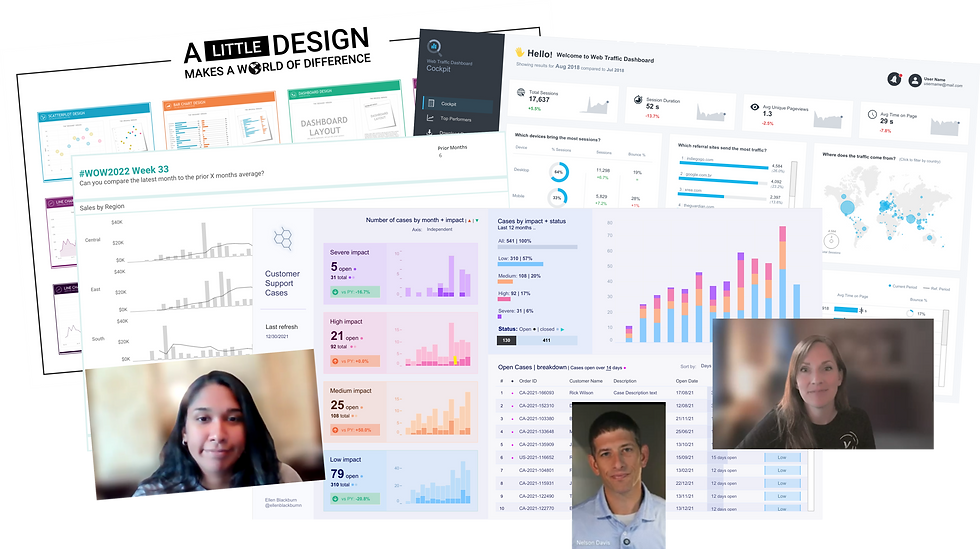The Fundamentals of Data Visualization
- Jennifer Dawes

- Feb 20, 2024
- 3 min read
Updated: Jan 2
Understanding Preattentive Attributes

There are times in our careers when going back to the basics is a fun and reaffirming process. I recently reviewed early projects I created as I was talking to a mentee and felt the opportunity was right to talk about a data viz fundamental.
Data visualization is a powerful tool for communicating complex information in a clear and compelling manner. One key aspect of effective visualization is understanding preattentive attributes—visual properties that our brains effortlessly perceive and process. These attributes play a crucial role in guiding viewers' attention and facilitating rapid comprehension of the data being presented. Let's delve into some fundamental preattentive attributes:
Hue and Color: Color is one of the most potent preattentive attributes. Different hues can be used to represent distinct categories or highlight specific data points. However, it's important to consider factors such as color blindness and ensure that color choices are meaningful and accessible to all viewers.
Size: The size of visual elements can convey magnitude or importance. Larger elements often attract more attention and can be used to emphasize key data points or trends within the visualization.
Orientation: Orientation refers to the alignment or directionality of visual elements. Changes in orientation can be used to signify relationships or highlight patterns within the data.
Length and Width: Length and width can be used to represent quantitative values, such as in bar charts or scatter plots. Variations in length or width can help viewers quickly understand differences in magnitude or scale.
Shape: Shapes can be used to encode categorical information or distinguish between different types of data points. For example, different shapes may represent different product categories in a scatter plot.
Position: The position of visual elements relative to each other can convey spatial relationships or groupings within the data. Placing related elements closer together can help viewers understand their connection while separating them can indicate distinctions.
Grouping: Grouping visual elements together can help viewers perceive patterns or clusters within the data. Grouping can be achieved through proximity, color, or other visual cues, making it easier for viewers to discern relationships and trends.
Let's explore an example I use when presenting on this topic. On Tableau Public I published a Superstore Dashboard. I created this dashboard several years ago but the fundamentals are still true and although there are things I would change the preattentive attributes still communicate clearly. Color is used sparingly to represent sales and profit, high and low. For the Profit by state color and shape are used to represent the states of the map. At quick glance I see New York (NY) and California (CA) have high profits and Texas (TX) has a low profit comparably speaking.

Now let's take the same dashboard but give an extreme example of how preattentive attributes were not used correctly and see how it looks.

I think most can see the difference between these two examples. Color should not be used as a paint-by-number. Also, size and orientation are really key as well.
Understanding how to utilize these preattentive attributes effectively can significantly enhance the clarity and impact of your data visualizations. By strategically leveraging hue, color, size, orientation, length, width, shape, position, and grouping, you can create visualizations that are not only aesthetically pleasing but also intuitive and informative, empowering viewers to gain meaningful insights from the data at hand.






Comments